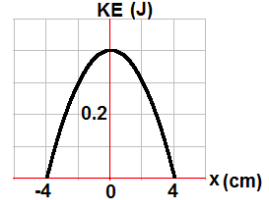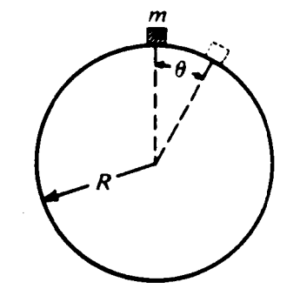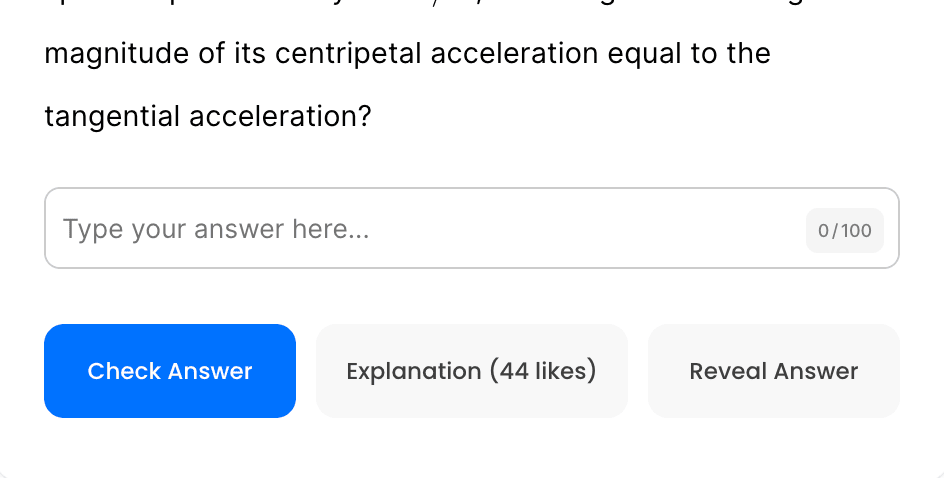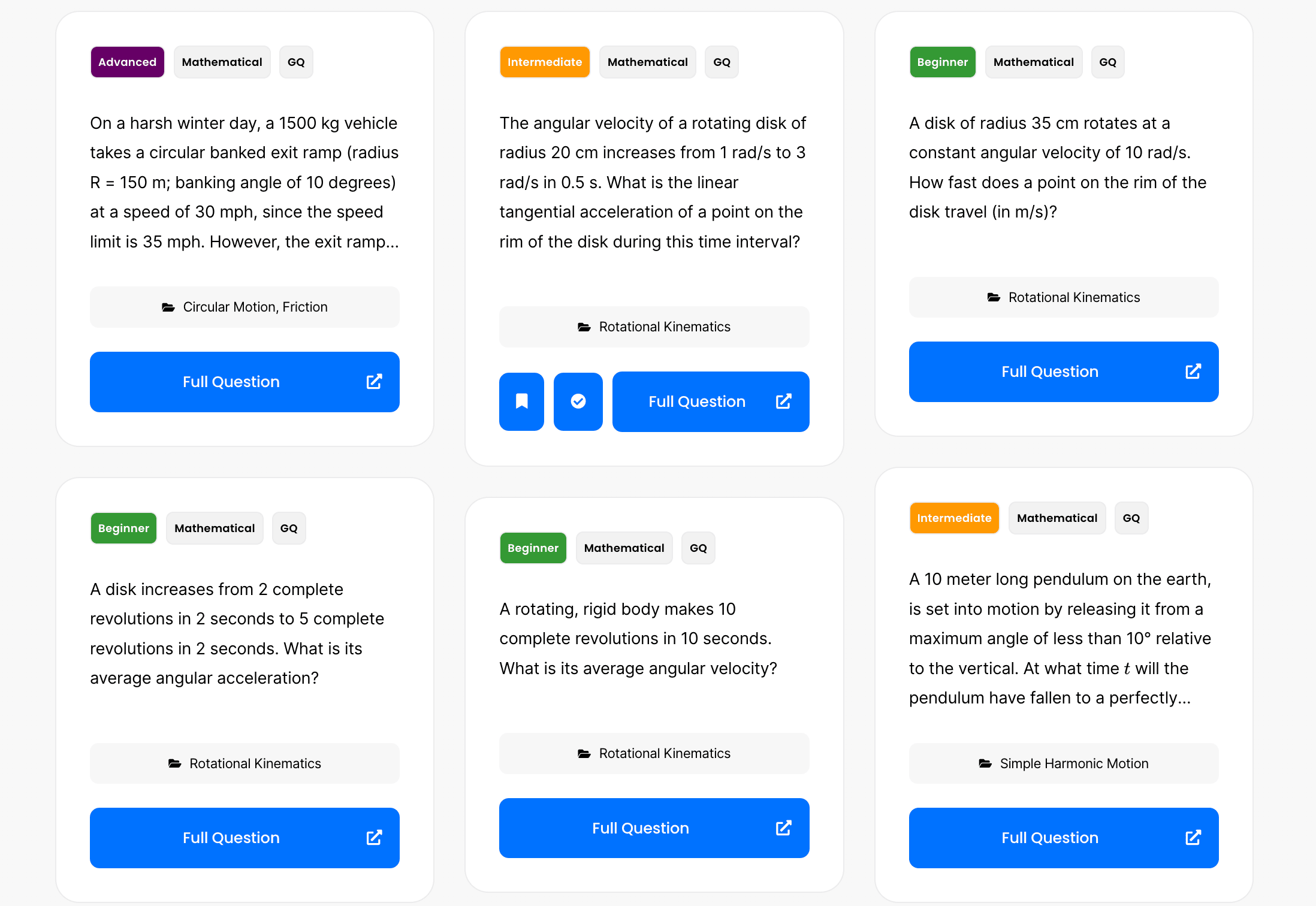A new car is tested on a 230-m-diameter track. If the car speeds up at a steady [katex] 1.4 \, m/s^2[/katex], how long after starting is the magnitude of its centripetal acceleration equal to the tangential acceleration?
Consider a uniform hoop of radius R and mass M rolling without slipping. Which is larger, its translational kinetic energy or its rotational kinetic energy?
On a distant planet, golf is just as popular as it is on earth. A golfer tees off and drives the ball 3.5 times as far as he would have on earth, given the same initial velocities on both planets. The ball is launched at a speed of 45 m/s at an angle of 29° above the horizontal. When the ball lands, it is at the same level as the tee. On the distant planet find:
A truck of mass 3500 kg hits the back of a small car of mass 1400 kg. Which car exerted more force on the other and why?
The large piston in a hydraulic lift has a radius of \( 250 \) \( \text{cm}^2 \). What force must be applied to the small piston with a radius of \( 25 \) \( \text{cm}^2 \) in order to raise a car of mass \( 1500 \) \( \text{kg} \)?
A group of astronauts in a spaceship are attempting to land on Mars. As they approach the planet, they begin to plan their descent to the surface.
A \( 1.0 \)\( \text{-kg} \) object is moving with a velocity of \( 6.0 \) \( \text{m/s} \) to the right. It collides and sticks to a \( 2.0 \)\( \text{-kg} \) object moving with a velocity of \( 3.0 \) \( \text{m/s} \) in the same direction. How much kinetic energy was lost in the collision?

A 0.2 kg object is attached to a horizontal spring undergoes SHM with the total energy of 0.4 J. The kinetic energy as a function of position presented by the graph.
A \( 60 \ \text{kg} \) person is riding in an elevator. At time \( t_1 \), the elevator is accelerating downward with a magnitude of \( 2 \ \text{m/s}^2 \). A short time later, at time \( t_2 \), the elevator is accelerating upward with a magnitude of \( 2 \ \text{m/s}^2 \). The ratio of the normal force exerted by the elevator on the person at time \( t_1 \) to that at time \( t_2 \) is most nearly
A box with a mass of \( M \) rests on a scale in an elevator that is moving downwards. The elevator slows with an acceleration of \( \dfrac{g}{4} \). Which of the following will give the reading of the scale?
Which graph below shows that one of the runners started 10 meters further ahead of the other? Assume the y-axis is measured in meters and the x-axis is measured in seconds.

A particle of mass \(m\) slides down a fixed, frictionless sphere of radius \(R\), starting from rest at the top.
In terms of \(m\), \(g\), \(R\), and \(\theta\), determine each of the following for the particle while it is sliding on the sphere.
By continuing you (1) agree to our Terms of Use and Terms of Sale and (2) consent to sharing your IP and browser information used by this site’s security protocols as outlined in our Privacy Policy.
Quick Start Guide
AP physics 1, AP C, honors and advanced physics students.
Quickly filter questions by units and more.


Here’s guide to using 5 UBQ filters.
GQ = general question, MCQ = multiple choice, FRQ = free response.


Click the check or bookmark button.
Now you’ll be able to see completed or bookmarked questions at a glance!
Answer keys, personalized for you.

Phy will be responsible for grading your FRQs and GQs.
No more copy and pasting. Just solve and snap.
Questions for Mastery

By continuing you agree to nerd-notes.com Terms of Service, Privacy Policy, and our usage of user data.